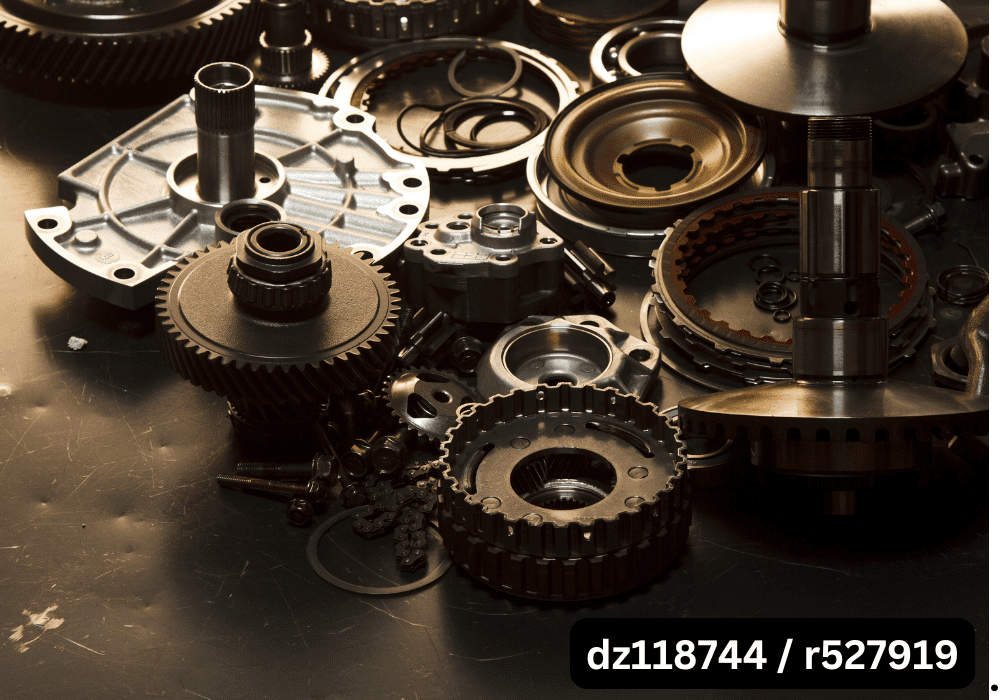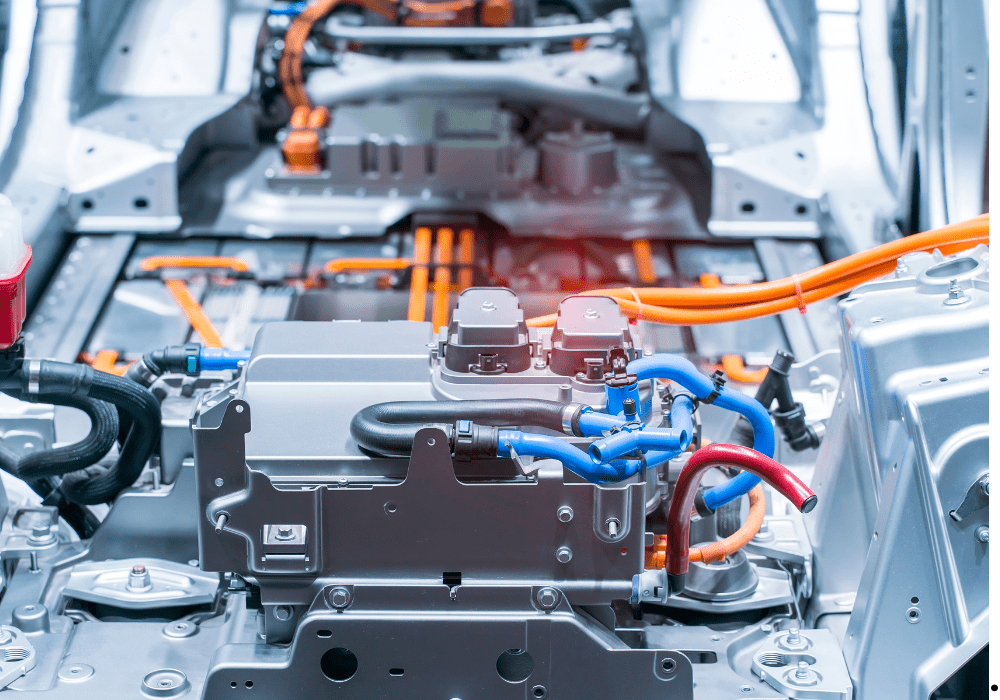Automotive
Monday Car Shipping Spikes: Understanding the Surge in Vehicle Transport

Introduction
Shipping vehicles across long distances is a common practice for businesses, individuals relocating, and car dealerships. Among the patterns observed in the car shipping industry, one particularly notable trend is the Monday car shipping spikes. This article delves deep into this phenomenon, exploring its causes, implications, and the best practices for those affected by it. Whether you’re a car owner looking to ship your vehicle or an industry professional, understanding Monday car shipping spikes can help you navigate the logistics more efficiently.
What Causes Monday Car Shipping Spikes?
The car shipping industry experiences fluctuations throughout the week, but Monday consistently sees a noticeable spike in activity.
- Weekend Backlog
- Car shipping companies often experience a lull in operations over the weekend, leading to a backlog of orders by Monday morning. Since most businesses operate on a standard Monday-to-Friday schedule, vehicles that weren’t processed over the weekend get pushed into the new week. This backlog creates a significant increase in shipping activity at the beginning of the week.
- Dealership Activity
- Car dealerships are one of the largest customers in the vehicle shipping industry. With sales often peaking over the weekend, dealerships are eager to move newly sold vehicles or replenish their inventory by Monday. As a result, there is an influx of shipping requests from dealerships at the start of the week, contributing to Monday car shipping spikes.
- Corporate Relocations
- Many corporate relocations are planned around a traditional workweek. Employees are often expected to start new positions on a Monday, meaning vehicles need to be shipped ahead of time to ensure timely delivery. This need for punctuality drives up demand for car shipping services on Mondays, as companies aim to have vehicles arrive by the end of the week.
- Personal Relocations
- Just like corporate relocations, personal moves are often planned around the start of the week. Individuals moving to a new city or state tend to schedule their car shipments to coincide with their Monday departure, leading to a surge in shipping requests on that day.
- Car Auctions
- The car auction industry operates on a weekly schedule, with many auctions taking place over the weekend. As cars are bought and sold, there is an immediate need to transport them to their new owners. By Monday, shipping companies are flooded with requests from auction houses, contributing to the Monday car shipping spikes.
The Impact of Monday Car Shipping Spikes on Carriers

The Monday surge in car shipping can have various implications for carriers:
- Increased Demand for Drivers
- With the spike in demand on Mondays, carriers often struggle to allocate enough drivers to fulfill the orders. This can lead to longer waiting times for customers or higher shipping costs due to the limited availability of resources.
- Logistical Challenges
- Coordinating multiple shipments across different states or regions becomes a logistical puzzle when the volume of requests suddenly increases. Carriers must optimize routes and schedules to accommodate the spike, often working under tight deadlines.
- Potential Delays
- The increased volume of shipments on Mondays can lead to delays, especially if there aren’t enough trucks or drivers available to handle the workload. Customers expecting quick delivery might face longer transit times due to the backlog.
- Higher Costs
- The spike in demand can also drive up costs, both for carriers and customers. Carriers might charge premium rates for Monday shipments to manage the extra load, while customers may face higher shipping fees if they book during peak periods.
Strategies for Carriers to Manage Monday Car Shipping Spikes
Carriers need to implement effective strategies to manage the Monday car shipping spikes and maintain smooth operations. Here are some approaches:
- Optimizing Workforce Allocation
- Carriers can anticipate the Monday surge and allocate additional drivers and trucks accordingly. By planning for the spike in advance, companies can ensure they have the resources needed to meet demand without sacrificing service quality.
- Leveraging Technology
- Modern technology can help carriers optimize routes, track shipments, and manage logistics more efficiently. By using advanced software, carriers can streamline operations and minimize delays, even during peak periods.
- Flexible Scheduling
- Offering flexible scheduling options for customers can help spread out the demand throughout the week. Encouraging customers to schedule their shipments for mid-week rather than Monday can help alleviate the pressure on carriers.
- Partnerships and Networks
- Building strong partnerships with other carriers and establishing a robust network can allow companies to handle larger volumes of shipments. By collaborating with other businesses, carriers can distribute the workload and ensure timely deliveries during Monday car shipping spikes.
- Customer Communication
- Transparent communication with customers about potential delays or cost increases during peak periods is essential. Carriers should set clear expectations and offer alternative solutions to customers who may be affected by the Monday surge.
How Customers Can Navigate Monday Car Shipping Spikes

For customers looking to ship their vehicles, navigating the Monday car shipping spikes can be challenging. However, by following these tips, they can minimize the impact and ensure a smooth shipping experience:
- Plan Ahead
- To avoid the rush and potential delays on Monday, customers should plan their shipments well in advance. Booking early allows for better scheduling options and increases the likelihood of timely delivery.
- Be Flexible
- Flexibility is key when it comes to car shipping. If possible, customers should consider shipping their vehicles on a different day of the week to avoid the Monday rush. Mid-week shipments tend to be less busy and may result in faster delivery times.
- Request Quotes from Multiple Carriers
- Shopping around for quotes from different carriers can help customers find the best rates. By comparing prices and services, they can make informed decisions and avoid paying premium rates during peak periods.
- Understand the Shipping Process
- Customers should familiarize themselves with the car shipping process and understand the potential challenges during Monday car shipping spikes. Being informed can help them set realistic expectations and plan accordingly.
- Communicate with the Carrier
- Maintaining open communication with the carrier is crucial. Customers should stay in touch with the company throughout the shipping process and inquire about any potential delays or issues that may arise due to the Monday surge.
The Role of Technology in Addressing Monday Car Shipping Spikes
Technology plays a vital role in managing the Monday car shipping spikes. Here’s how modern innovations are transforming the car shipping industry:
- Route Optimization Software
- Route optimization software helps carriers find the most efficient paths for their drivers, reducing transit times and fuel costs. This technology is especially valuable during Monday car shipping spikes, as it allows carriers to manage a higher volume of shipments more effectively.
- GPS Tracking
- Real-time GPS tracking provides carriers and customers with live updates on the location of their vehicles. This transparency helps manage expectations during busy periods and reduces the stress of potential delays.
- Automated Dispatch Systems
- Automated dispatch systems streamline the process of assigning drivers to shipments, making it easier to manage the increased volume of requests on Mondays. By automating this aspect of logistics, carriers can focus on meeting customer needs more efficiently.
- Digital Platforms for Customer Interaction
- Many carriers now offer digital platforms where customers can track their shipments, communicate with drivers, and manage their bookings. These platforms enhance the customer experience and allow for more streamlined communication during busy periods.
- Data Analytics
- Data analytics provides carriers with valuable insights into patterns and trends, allowing them to predict Monday car shipping spikes and plan accordingly. By analyzing past data, companies can make informed decisions and optimize their operations.
How Monday Car Shipping Spikes Affect Seasonal Trends
The impact of Monday car shipping spikes varies throughout the year, with certain seasons experiencing more pronounced spikes. Understanding these seasonal trends can help both carriers and customers prepare for peak periods.
- Summer Relocations
- Summer is a peak season for relocations, with many families moving during the school break. This results in increased demand for car shipping services, with Monday car shipping spikes becoming even more significant during the summer months.
- Holiday Seasons
- The holiday season also sees a surge in car shipments, as people travel or move to be closer to family. Additionally, dealerships often offer year-end promotions, leading to a higher volume of vehicle sales and subsequent shipping requests. Mondays during the holiday season can be particularly busy for carriers.
- Snowbird Migration
- Snowbirds, or individuals who move to warmer climates during the winter months, also contribute to seasonal spikes in car shipping. As these individuals relocate, the demand for vehicle transport services increases, with Mondays seeing a significant portion of this activity.
- College Moves
- At the start of each semester, there is a surge in car shipments as students move to college campuses. This trend is particularly noticeable in the fall and spring, with Mondays seeing higher volumes of shipments as students prepare for the start of classes.
- Tax Season
- The spring tax season often brings an increase in car sales, as people use their tax refunds to purchase new vehicles. This uptick in sales leads to a corresponding increase in car shipping requests, with Mondays seeing a significant portion of the activity.
Future Trends in Monday Car Shipping Spikes
The car shipping industry continues to evolve, and future trends may impact the Monday car shipping spikes in various ways. Here are some potential developments:
- Increased Use of Autonomous Vehicles
- As autonomous vehicle technology advances, it could revolutionize the car shipping industry. Self-driving trucks could help carriers manage the increased demand on Mondays by providing more consistent and reliable transportation services.
- Sustainability Initiatives
- Environmental concerns are driving many companies to adopt sustainable practices. In the car shipping industry, this could mean the use of electric trucks, optimized routes to reduce emissions, and other eco-friendly initiatives. These efforts could help alleviate some of the logistical challenges associated with
Monday car shipping spikes while contributing to a more sustainable future. Additionally, these efforts may help reduce costs and improve efficiency, particularly during peak periods.
- Increased Digitalization and Automation
- The growing digitalization of the car shipping industry will continue to shape how companies manage Monday car shipping spikes. Automated systems for dispatching, routing, and communication will become more prevalent, helping to streamline operations and reduce the challenges associated with high-volume periods.
- Customer-Centric Services
- As competition in the car shipping industry grows, companies will increasingly focus on providing more personalized and customer-centric services. This may include offering more flexible scheduling options, better communication tools, and tailored pricing structures that can help mitigate the impact of Monday car shipping spikes on both the business and the consumer.
- Enhanced Predictive Analytics
- Predictive analytics will play a bigger role in anticipating Monday car shipping spikes and allowing companies to prepare accordingly. By analyzing historical data, weather patterns, and other variables, companies can better predict when spikes will occur and allocate resources more effectively to manage them.
FAQs About Monday Car Shipping Spikes
1. Why do Monday car shipping spikes occur?
Monday car shipping spikes occur due to a combination of factors, including the weekend backlog of shipments, increased activity from car dealerships following weekend sales, personal and corporate relocations timed for the beginning of the workweek, and the immediate demand from car auctions held over the weekend.
2. How do Monday car shipping spikes affect the cost of shipping?
During Monday car shipping spikes, increased demand can drive up the cost of shipping as carriers may charge premium rates to accommodate the higher volume of requests. To avoid these higher costs, customers may want to consider booking their shipments for mid-week when demand is lower.
3. Can Monday car shipping spikes cause delays?
Yes, the increased volume of shipments on Mondays can lead to potential delays, especially if carriers are unable to meet the sudden demand. Customers should plan ahead and maintain open communication with their carrier to manage expectations regarding delivery times.
4. How can I avoid the Monday car shipping spikes?
To avoid the Monday car shipping spikes, consider scheduling your vehicle shipment for mid-week when demand is typically lower. Planning your shipment in advance and being flexible with your schedule can also help you avoid the busy Monday rush.
5. What role does technology play in managing Monday car shipping spikes?
Technology plays a crucial role in helping carriers manage the Monday car shipping spikes by optimizing routes, tracking shipments in real-time, automating dispatch processes, and improving communication with customers. These technological advancements help streamline operations and reduce the challenges associated with peak periods.
Conclusion
Monday car shipping spikes are a significant phenomenon in the vehicle transport industry, driven by various factors such as weekend backlogs, dealership activity, and relocations. While these spikes present challenges for both carriers and customers, understanding the causes and implementing effective strategies can help mitigate their impact. Carriers can prepare for the surge by optimizing workforce allocation, leveraging technology, and maintaining transparent communication with customers. Meanwhile, customers can navigate the Monday rush by planning ahead, staying flexible, and staying informed.
As the car shipping industry continues to evolve, future trends such as increased digitalization, automation, and sustainability initiatives will likely influence how companies manage Monday car shipping spikes. By staying ahead of these trends and adopting new technologies, the industry can continue to improve its efficiency and meet the growing demand for vehicle transport services.
Automotive
Gorilla Kustoms: Pioneering Vehicle Personalization in Gosford, New South Wales

1. Overview of Gorilla Kustoms
1.1 Services Overview
Gorilla Kustoms, a renowned auto customisation and restoration company based in Gosford, New South Wales, Australia, is committed to turning automobiles into one-of-a-kind manifestations of uniqueness. gorillakustoms.works offers high-quality custom automobile parts and attentive detailing to both regular drivers and automotive enthusiasts.
1.2 The Mission
Our goal at Gorilla Kustoms is to satisfy the various needs of car owners by offering outstanding automotive services. The crew aims to go above and beyond the expectations of the client, whether it be for a custom paint job, rust treatment, or full car restoration.
2. The Craft of Personalization
2.1 Customized Painting Projects
2.1.1 Original Designs
Custom paint jobs are one of Gorilla Kustoms’ most notable offerings. Gorilla Kustoms’ talented painters can produce custom designs that reflect the ideas of each client. Car owners can express their personalities through every paint job, from traditional flames to contemporary graphics.
2.1.2 High-Grade Resources
By using premium paint and finishes, Gorilla Kustoms guarantees both longevity and an amazing look. The group’s proficiency with a range of methods, including color blending and airbrushing, produces a faultless finish that endures over time.
2.2 Fixing Rust
2.2.1 Recognizing Rust Problems
For owners of vehicles, rust can be a major problem, particularly in places with severe weather. Gorilla Kustoms is an expert in spotting and fixing rust problems early on. Their group performs comprehensive
2.2.2 Repair Methods
Rust damage is expertly repaired by Gorilla Kustoms using cutting-edge restoration procedures. In order to ensure a uniform appearance, this operation frequently entails cutting off the damaged sections, applying anti-corrosion treatments, and flawlessly merging repairs with the vehicle’s original bodywork.
3. Focusing on Small Trucks
3.1 The Appeal of Small Trucks
Small trucks’ adaptability and customizability have won them a devoted following among auto enthusiasts. Acknowledging this trend, Gorilla Kustoms provides owners of micro trucks wishing to customize their cars with specialist services.
3.2 Tailored Adjustments
3.2.1 Upgrades for Suspensions
Suspension upgrades are a common choice among aficionados of small trucks. Gorilla Kustoms offers a range of alternatives for raising or lowering small trucks, enhancing their handling and appearance. These additions make driving the car more pleasurable in addition to improving its aesthetic appeal.
3.2.2 Specialized Bodywork
Custom body work for mini trucks, including fender flares, beds, and bumpers, is an area of expertise for Gorilla Kustoms. With these additions, owners can design a car that is genuinely unique and expresses their personal taste.
4. Complete Auto Repair
4.1 Standard Upkeep Services
Gorilla Kustoms provides a variety of standard maintenance services in addition to customisation to maintain cars in top shape. To ensure road safety and prolong the life of any vehicle, regular maintenance is essential.
4.2 Maintenance on the Engine and Transmission
4.2.1 Improvements in Performance
Gorilla Kustoms offers engine and gearbox repair services to improve the performance of your car. This covers maintenance, upgrades, and tuning services for both daily drivers and performance aficionados.
4.2.2 Maintenance in Advance
Avoiding future expensive repairs requires preventive maintenance. Gorilla Kustoms’ skilled technicians are able to foresee possible problems and take proactive measures to resolve them, keeping cars in excellent condition.
5. A Customer-First Mentality
5.1 Individualized Advice
Gorilla Kustoms emphasizes the importance of comprehending the vision of each client. Through individual consultations, the team can better understand needs and preferences, resulting in solutions that are customized to fit each client’s preferences and financial constraints.
5.2 Assurance of Quality
Gorilla Kustoms is committed to quality assurance in all of its projects. The crew makes sure that every step of the customisation or repair procedure reaches the greatest standards, from the first consultation to the last adjustments.
6. Establishing a Car-Enthusiast Community
6.1 Community Activities and Involvement
Gorilla Kustoms is more than simply a company; it serves as the center of the neighborhood’s auto scene. The group participates in local auto exhibitions and events on a regular basis, which helps them network with other enthusiasts and display their work.
6.2 Information Sharing
Gorilla Kustoms provides education on car customizing and maintenance through workshops and informational sessions. Car owners are empowered to make knowledgeable decisions about their automobiles thanks to this educational approach.
7. Final Thoughts
7.1 Gorilla Kustoms’ Future
Gorilla Kustoms is dedicated to quality and creativity in car customizing even as it expands. With an emphasis on client pleasure and high-quality service, this Gosford-based company has a promising future.
7.2 Concluding Remarks
Gorilla Kustoms provides unmatched skill in automobile maintenance, rust repair, and modification for both daily drivers and auto enthusiasts. Gorilla Kustoms in Gosford, New South Wales is the place to go whether you want to customize your small truck or just keep it in great shape. Seize the chance to work with a team that genuinely gets your passion for vehicles to realize your automotive goals.
“Don’t miss out on updates and alerts – stay connected!” Discover Hints
Automotive
Ford F350 Part Number FL34 894323: The Complete Guide

The Ford F350 is a heavy-duty pickup truck known for its reliability, power, and versatility, making it a popular choice among drivers who need a vehicle for tough jobs. However, as with any vehicle, maintaining peak performance requires regular upkeep and the replacement of essential parts. One such critical part is the Ford F350 part number FL34 894323. If you’ve come across this part number and are curious about its role, function, and how to obtain it, you’re in the right place. This comprehensive guide will cover everything you need to know about Ford F350 part number FL34 894323, from what it is to how to install it, and how it
What Is Ford F350 Part Number FL34 894323?
The Ford F350 part number FL34 894323 refers to a specific component used in the Ford F350, one of Ford’s Super Duty series trucks designed for heavy-duty work. While the exact function of this part can vary depending on the model year and engine configuration, part numbers like FL34 894323 are crucial for identifying the correct component for maintenance and repairs.
This part number is often associated with components related to the electrical system, engine compartment, or chassis, but it’s important to check the owner’s manual or consult with a Ford dealership to confirm its exact purpose for your truck. Using the wrong part can lead to performance issues, so understanding the function of FL34 894323 is critical for keeping your F350 running smoothly.
The Importance of Genuine Ford Parts
When it comes to replacing parts on your Ford F350, it’s vital to use genuine OEM (Original Equipment Manufacturer) parts like ford f350 part number fl34 894323 price Genuine Ford parts are designed to meet the manufacturer’s strict quality and performance standards, ensuring compatibility and longevity.
Here’s why genuine parts matter:
- Performance: Genuine parts are built to maintain your truck’s factory-level performance.
- Durability: OEM parts are tested for longevity and wear resistance, meaning they’re designed to last.
- Warranty: Ford parts come with a manufacturer’s warranty, providing peace of mind.
- Fitment: OEM parts are specifically designed for your vehicle, ensuring the best possible fit and function.
Specifications of the Ford F350 Part Number FL34 894323

Understanding the technical specifications of the Ford F350 part number FL34 894323 is crucial for knowing if it’s the right fit for your vehicle. While specific specs can vary depending on the model year and engine type, Ford’s part number system often indicates details like size, material, and function.
Key specifications may include:
- Material: Typically, Ford uses high-grade materials like steel, aluminum, or durable plastic for parts like this, depending on the application.
- Fitment: Designed for specific Ford F350 models, often relating to the Super Duty series.
- Functionality: This part could be related to systems like the engine, transmission, or braking system, though the exact role will depend on your truck’s configuration.
Consulting a Ford dealer or checking the part number against an official parts database is recommended to ensure accuracy.
Common Applications for Ford F350 Part Number FL34 894323
The ford f350 part number fl34 894323 price is most commonly found in Ford’s Super Duty lineup of F-series trucks, particularly in models designed for heavy-duty work. The F350 is used in a variety of applications, from construction to towing, and parts like FL34 894323 are essential for ensuring the vehicle can handle tough conditions.
Common applications include:
- Heavy-duty towing: F350 trucks often require robust parts like FL34 894323 to support their high towing capacity.
- Off-road driving: In rugged conditions, the durability and reliability of parts like FL34 894323 are critical.
- Commercial use: Businesses that rely on their trucks for daily work need components that can withstand wear and tear.
If you use your F350 for demanding tasks, it’s essential to keep all components, including FL34 894323, in top condition.
Where to Buy Genuine Ford F350 Part Number FL34 894323
Finding genuine Ford F350 part number FL34 894323 is critical for ensuring your vehicle’s performance and longevity. Here are some trusted places where you can purchase this part:
- Authorized Ford Dealerships: Purchasing directly from a Ford dealership ensures you’re getting an authentic OEM part. This is one of the most reliable sources, and dealerships often have parts specialists who can verify the exact part you need.
- Online Retailers: Websites like FordParts.com and AutoZone carry genuine Ford parts, including FL34 894323. Be sure to check for proper part numbers and confirm that the retailer is an authorized distributor of Ford parts.
- Aftermarket Stores: Some stores specialize in Ford parts, and while they may carry OEM options, make sure to verify the part number to ensure compatibility.
Always avoid purchasing parts from unverified sellers or online auction sites, as counterfeit parts can cause more harm than good to your vehicle.
Installation of ford f350 part number fl34 894323 price should be done with care, following specific guidelines from the manufacturer. Depending on the exact nature of the part, installation may involve basic hand tools or, in some cases, more specialized equipment.
Here’s a general installation guide:
- Consult the Manual: Always refer to your Ford F350’s owner manual or service guide for specific instructions.
- Prepare the Tools: Gather all the necessary tools, such as wrenches, screwdrivers, and any specialty tools that may be needed for accessing the part’s location.
- Disconnect the Battery: If the part is connected to the electrical system, disconnecting the battery is a crucial safety step.
- Remove the Old Part: Carefully remove any components obstructing access to the FL34 894323 part.
- Install the New Part: Fit the new part into place, ensuring all connections are secure.
- Test the Part: Once installed, run your truck to ensure that everything is functioning correctly.
While some parts can be installed by experienced DIYers, for more complex installations, consider taking your truck to a certified mechanic.
How to Identify the Ford F350 Part Number FL34 894323
Correct identification of the ford f350 part number fl34 894323 price is crucial to ensure you’re purchasing or installing the correct component. Here’s how you can identify it:
- Manufacturer’s Documentation: Your truck’s manual or service guide will often list part numbers associated with specific components.
- Physical Part Label: Most OEM parts come with a label or engraving that includes the part number. You can locate this number directly on the part if it’s already installed.
- Online Parts Databases: Websites like FordParts.com or third-party auto parts databases allow you to search for parts by inputting the vehicle’s year, make, and model.
If you’re unsure, it’s always a good idea to consult a Ford dealer or a certified mechanic for confirmation.
Symptoms of a Faulty Ford F350 Part Number FL34 894323
Like any vehicle part, Ford F350 part number FL34 894323 can wear out over time or malfunction. It’s important to recognize the symptoms of a faulty part to avoid long-term damage to your truck.
Common symptoms of a malfunctioning FL34 894323 include:
- Unusual Noises: If you hear grinding, squeaking, or other abnormal sounds, it could indicate an issue with the part.
- Performance Issues: A drop in engine or system performance, such as rough idling or poor acceleration, may point to a malfunction.
- Warning Lights: The vehicle’s onboard diagnostics system may trigger a warning light, indicating that a critical component like FL34 894323 is not functioning properly.
If you notice any of these issues, it’s crucial to replace or repair the part as soon as possible to prevent further damage.
Maintenance Tips for Maximizing the Life of Ford F350 Part Number FL34 894323

To ensure the longevity of Ford F350 part number FL34 894323, regular maintenance is key.
Routine Inspections: Periodically check the part (or have it inspected by a mechanic) for signs of wear or damage.
- Use Genuine Parts: Always replace faulty components with genuine Ford OEM parts to maintain optimal performance.
- Keep the Engine Clean: Dust, dirt, and debris can build up in the engine compartment, affecting various parts, including FL34 894323.
- Follow Manufacturer’s Service Schedule: Adhering to the recommended maintenance schedule can prevent premature wear of critical parts.
By following these steps, you can avoid unexpected breakdowns and costly repairs.
Why Choose OEM Parts Like Ford F350 Part Number FL34 894323?
Choosing OEM parts, such as Ford F350 part number FL34 894323, has several advantages over aftermarket alternatives:
- Quality: OEM parts are manufactured to meet the exact specifications of your vehicle, ensuring higher quality and compatibility.
- Warranty Protection: Using genuine Ford parts often ensures that your vehicle’s warranty remains valid, whereas aftermarket parts might void it.
- Longevity: OEM parts are designed for long-term use, meaning fewer replacements and repairs in the future.
- Resale Value: Vehicles with all OEM parts tend to retain higher resale values compared to those with aftermarket components.
Comparing Aftermarket Parts to Ford F350 Part Number FL34 894323
While aftermarket parts are often less expensive, they come with certain risks:
- Fitment Issues: Aftermarket parts may not fit perfectly, leading to installation challenges and performance issues.
- Durability: OEM parts like FL34 894323 are built to last, while aftermarket parts may not meet the same standards.
- Warranty Concerns: As mentioned earlier, aftermarket parts can void your warranty, which can lead to costly repairs down the line.
For critical components, it’s always best to stick with genuine OEM parts to ensure your truck’s safety and performance.
Troubleshooting Common Issues with Ford F350 Part Number FL34 894323
If you experience issues with Ford F350 part number FL34 894323, here are some troubleshooting steps:
- Check for Proper Installation: Ensure the part was installed correctly and that all connections are secure.
- Inspect for Wear and Tear: Look for signs of physical damage or wear on the part.
- Run a Diagnostic Test: Use a vehicle diagnostic tool to check for error codes related to the part.
- Consult a Mechanic: If the issue persists, consult a professional who can properly diagnose and repair the problem.
Costs Associated with Ford F350 Part Number FL34 894323
The price of Ford F350 part number FL34 894323 can vary based on factors such as:
- Where you purchase it (dealership, online retailer, etc.)
- Shipping costs
- Installation fees, if handled by a mechanic
On average, parts like FL34 894323 can range from $100 to $500, depending on the complexity of the component and whether installation is required.
Warranty Information for Ford F350 Part Number FL34 894323
When purchasing ford f350 part number fl34 894323 priceit’s important to inquire about the warranty. Most OEM parts come with a warranty from Ford, which typically covers:
- Manufacturer defects
- Premature wear
- Installation issues, if installed by a certified Ford technician
Be sure to ask about the specific warranty terms when purchasing the part, as they may vary depending on where you buy it.
Frequently Asked Questions (FAQs) About Ford F350 Part Number FL34 894323
What does Ford F350 part number FL34 894323 refer to?
The Ford F350 part number FL34 894323 refers to a specific component used in the Ford F350, typically related to the vehicle’s electrical, engine, or chassis systems.
Where can I purchase Ford F350 part number FL34 894323?
You can buy this part from authorized Ford dealerships, online retailers such as FordParts.com, or certified aftermarket stores that specialize in Ford components.
How do I know if Ford F350 part number FL34 894323 is compatible with my truck?
Consult your owner’s manual or use an online parts database to cross-reference the part number with your vehicle’s year, make, and model.
How do I install Ford F350 part number FL34 894323?
Installation instructions will vary depending on the component’s function. It’s recommended to refer to your vehicle’s service manual or consult a professional mechanic.
How long does Ford F350 part number FL34 894323 last?
The lifespan of the ford f350 part number fl34 894323 price depends on its application and maintenance but can last several years if properly cared for.
Conclusion
The Ford F350 part number FL34 894323 is a crucial component for maintaining the optimal performance of your truck, particularly in demanding applications like heavy towing and off-road driving. Using genuine OEM parts ensures that your vehicle stays in top shape, delivering the reliability and power the F350 is known for. By understanding its specifications, proper installation procedures, and how to source the part, you can maximize the lifespan of this essential component and keep your truck running smoothly for years to come.
Automotive
DZ118744 / R527919: The Ultimate Guide

When it comes to specific part numbers in industries such as electronics, automotive, or manufacturing, it’s crucial to understand exactly what these codes represent. In this detailed guide, we’ll be focusing on the part numbers DZ118744 / R527919. Whether you’re a technician, a buyer, or simply someone looking to understand more about these parts, this article will cover everything from their meaning, applications, specifications, and how to properly maintain or replace them.
By the end of this comprehensive guide, you’ll have a thorough understanding of DZ118744 / R527919, their role in various industries, and why they are important.
Introduction to DZ118744 / R527919
The part numbers DZ118744 / R527919 may not be familiar to everyone, but they serve an essential function in specific industries. These part numbers are likely identifiers for specific machine components, tools, or mechanical parts used in industries such as automotive manufacturing, electrical engineering, or industrial machinery.
Part numbers like DZ118744 / R527919 help manufacturers, suppliers, and consumers ensure they are discussing or purchasing the correct item. Whether you are sourcing parts for repair or assembly, understanding what these part numbers represent is crucial for efficiency and avoiding costly errors.
The Importance of Part Numbers in Industry
Part numbers are a standardized method for identifying components in various sectors. In the automotive, electronics, and industrial fields, manufacturers and suppliers rely on part numbers to ensure that the right component is being used for specific applications. This practice prevents confusion when ordering parts or communicating across various departments and locations.
For instance, a simple code like DZ118744 / R527919 can refer to a very specific component that is used in a car engine, aircraft system, or industrial machine. This system of coding ensures that the correct part is being sourced and used for its intended purpose.
What is DZ118744 / R527919?

DZ118744 / R527919 are part numbers that represent specific components or items in a manufacturer’s inventory. Typically, part numbers are composed of a combination of alphanumeric characters that help identify the category, series, and other specifications of the item.
In the case of DZ118744 / R527919, this could represent:
- A mechanical component in an automotive system.
- An electronic part used in industrial machinery or consumer devices.
- A replacement part for heavy-duty equipment.
The exact nature of DZ118744 / R527919 depends on the manufacturer or supplier, but these numbers typically follow a specific logic that categorizes the item according to its type, size, or function.
Common Applications of DZ118744 / R527919
DZ118744 / R527919 parts are often used in various industries. Here are some common areas where these components may play a crucial role:
- Automotive Industry: Parts like DZ118744 / R527919 may be used in engine systems, brakes, or transmission assemblies, playing a vital role in the performance of vehicles.
- Manufacturing Equipment: These parts can be found in large machinery used for industrial manufacturing processes. They may function in conveyor belts, robotic arms, or other high-tech machinery.
- Electrical Engineering: In some cases, DZ118744 / R527919 might refer to specialized components in electronics, including circuit boards, connectors, or transformers.
Understanding the application of these parts is essential, especially if you are tasked with maintaining, repairing, or optimizing systems that rely on them.
Material Specifications and Durability of DZ118744 / R527919
The materials used in manufacturing DZ118744 / R527919 components depend on their intended purpose.Stainless Steel: Often used for parts that require corrosion resistance and high strength, particularly in industrial or automotive applications.
- Aluminum: Lightweight and durable, aluminum parts are ideal for applications where weight savings are important, such as in aircraft or automotive industries.
- Plastic or Composite Materials: Some parts use high-grade plastics or composites, especially if they need to be insulated or non-conductive for electrical applications.
The durability of DZ118744 / R527919 components will depend on the material and the operational environment. For example, a stainless steel part in an automotive system may last years under normal operating conditions but could wear down faster under extreme stress or exposure to harsh chemicals.
How to Identify DZ118744 / R527919 Components
Identifying components with part numbers like DZ118744 / R527919 is essential for anyone responsible for maintenance or replacement in mechanical systems. Here’s how to accurately identify these parts:
- Check the Manufacturer’s Documentation: Always refer to the equipment’s user manual or technical guide. Manufacturers often list part numbers associated with each component.
- Look for Labels or Engravings: Many components will have the part number directly engraved or printed on the part itself.
- Use a Part Number Lookup Tool: Online databases allow you to enter a part number like DZ118744 / R527919 and get detailed information about the component.
By ensuring you’re using the correct part number, you can avoid the costly mistake of ordering the wrong part.
How to Source DZ118744 / R527919 Parts
When sourcing components such as DZ118744 / R527919, it’s important to buy from reputable suppliers or directly from the manufacturer. Here are the best practices for sourcing these parts:
- Authorized Distributors: Always buy from authorized distributors who carry genuine parts. This ensures quality and compatibility.
- Manufacturer’s Website: Some companies sell parts directly through their official websites.
- Third-Party Retailers: If the part is unavailable from the manufacturer or distributors, third-party sellers might have it, but ensure that they are trustworthy.
Make sure you verify the part number and confirm the authenticity of the supplier before making any purchase.
Installation and Maintenance Tips for DZ118744 / R527919
To ensure that DZ118744 / R527919 parts work correctly, follow these installation and maintenance tips:
- Read the Installation Guide: Always refer to the official installation guide provided by the manufacturer to ensure proper handling and placement.
- Use the Right Tools: Depending on the component, you may need specialized tools for installation. For example, automotive parts often require specific wrenches or torque settings.
- Regular Inspection: For parts that undergo regular wear and tear, such as those in engines or industrial machinery, routine inspections can help identify potential issues early on.
- Proper Lubrication: For moving parts like gears or bearings, lubrication is critical to ensuring longevity and smooth operation.
By adhering to these guidelines, you can extend the life of your DZ118744 / R527919 parts and maintain their performance.
Why is DZ118744 / R527919 Important for Your Equipment?

Parts such as DZ118744 / R527919 may seem insignificant, but they play an essential role in the functionality of larger systems. Whether they are part of a hydraulic system, engine assembly, or electrical circuit, these parts ensure smooth operation and prevent failures that could lead to costly downtime.
The Lifespan of DZ118744 / R527919 Components
The lifespan of DZ118744 / R527919 components depends on several factors:
- Operating Conditions: Parts exposed to extreme temperatures, pressure, or chemical agents may wear out faster.
- Material: Higher-quality materials such as stainless steel or high-grade alloys typically have a longer lifespan.
- Maintenance: Regular maintenance can extend the lifespan of parts significantly.
In many cases, the expected lifespan of DZ118744 / R527919 will be outlined in the manufacturer’s technical specifications.
Alternatives and Substitutes for DZ118744 / R527919
If the part DZ118744 / R527919 is no longer available or is too costly, alternatives or substitutes may be considered. However, you must ensure that any replacement part meets the same specifications for size, material, and function.
- OEM vs. Aftermarket: Original Equipment Manufacturer (OEM) parts are generally the preferred choice, but aftermarket parts may offer cheaper alternatives if the quality is guaranteed.
- Generic Parts: In some cases, generic parts might be available that fit a range of systems. Be cautious, as using non-specified parts could void warranties or lead to performance issues.
Troubleshooting Issues with DZ118744 / R527919
If your DZ118744 / R527919 part is malfunctioning, here are common issues to troubleshoot:
- Misalignment: Ensure the part is installed correctly and aligned with surrounding components.
- Wear and Tear: Inspect the part for signs of physical damage, corrosion, or excessive wear.
- Compatibility: Double-check that the part number matches the required specification for your machine.
In case of persistent issues, consult a professional or the manufacturer for advice.
Price Range and Availability of DZ118744 / R527919
The cost of DZ118744 / R527919 parts varies based on factors like:
.
- Availability: Rare parts or those no longer in production can be significantly more expensive due to scarcity.
- Location: Shipping and import fees may also affect pricing.
On average, parts like DZ118744 / R527919 can range from $50 to several hundred dollars, depending on the industry and application.
Future Trends in Part Manufacturing and What It Means for DZ118744 / R527919
As technology continues to evolve, we can expect trends like 3D printing, artificial intelligence, and smart manufacturing to impact the production of parts like DZ118744 / R527919. These advancements will likely lead to more efficient production methods, lower costs, and possibly more durable materials.
FAQs about DZ118744 / R527919
What does DZ118744 / R527919 refer to?
DZ118744 / R527919 are part numbers used to identify specific components in industries like automotive, electrical, and industrial machinery.
Where can I purchase DZ118744 / R527919 parts?
You can buy these parts from authorized distributors, the manufacturer’s website, or trusted third-party retailers.
How do I ensure compatibility when ordering DZ118744 / R527919?
Always verify the part number with your equipment’s manual or by consulting with the manufacturer to ensure compatibility.
Can I use aftermarket alternatives for DZ118744 / R527919?
Aftermarket alternatives are available, but ensure they meet the same specifications and quality standards as OEM parts.
How long do DZ118744 / R527919 components last?
The lifespan depends on usage, material, and operating conditions.
Conclusion
Understanding part numbers like DZ118744 / R527919 is critical for anyone working in industries that rely on specialized components. Whether you are responsible for sourcing parts, maintaining equipment, or simply interested in industrial systems, this guide has provided a comprehensive overview of DZ118744 / R527919, its applications, and best practices for handling these components.
By ensuring you use the correct part, properly maintain it, and understand its role, you can ensure that your systems operate efficiently and safely.
-

 Blog9 months ago
Blog9 months agoOkiha18 Convenience Store Things: A Comprehensive Guide
-

 Automotive8 months ago
Automotive8 months agoGorilla Kustoms: Pioneering Vehicle Personalization in Gosford, New South Wales
-

 Real Estate7 months ago
Real Estate7 months agoWhat Are the Benefits of Regular Pressure Washing for Seattle Commercial Properties?
-

 Tech10 months ago
Tech10 months agoSSIS-698: Why This Unique Code Is Important
-

 Tech11 months ago
Tech11 months ago127.0.0.1:62893: Common Uses and Best Practices
-

 Lifestyle11 months ago
Lifestyle11 months agoHow Old is Lil Meech? Age, Height, Family & More
-

 Biography11 months ago
Biography11 months agoAll About Kristy Greenberg Wikipedia : Biography and More
-

 Lifestyle11 months ago
Lifestyle11 months agoSoymamicoco and Its Remarkable Benefits – Ultimate Guide



Anonymous
May 31, 2025 at 8:21 am
Thanks for sharing. I read many of your blog posts, cool, your blog is very good. https://accounts.binance.com/ru/register-person?ref=V3MG69RO